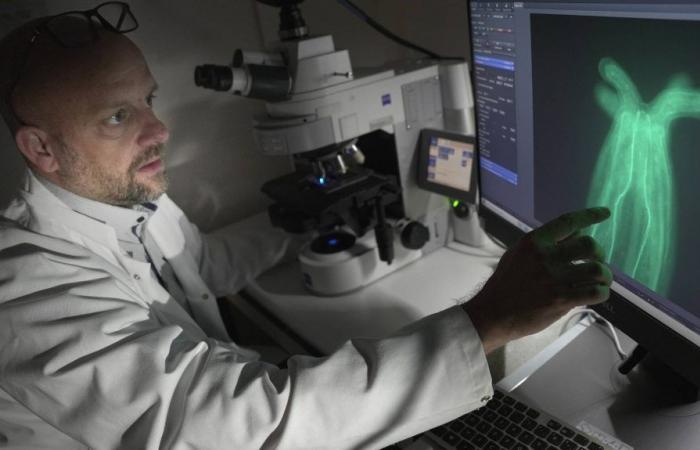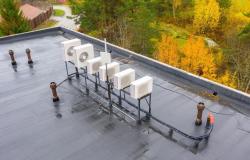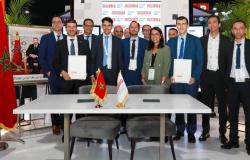
On the 7th floor of the Nice Faculty of Medicine, he pushes open the door to the laboratory where corals and sea anemones are kept in large aquariums. “In this cabinet we have 20,000 little anemones that we use for our research.”
If Eric Röttinger, research director (CNRS)*, and his team are interested in these marine organisms, it is to understand how they manage to live so long and regenerate their cells so quickly.
The objective: to ultimately be able to transfer these discoveries to humans and thus attempt to fight against aging-related diseases such as tissue degeneration.
“The goal is to find ways to enable people to live and age in better health. But not necessarily to extend life expectancy.”says this 48-year-old Franco-German, fascinated since childhood by the Mediterranean and the marine world.
In 2013, the Côte d’Azur researcher received national funding and joined the Nice Cancer and Aging Research Institute (IRCAN – Université Côte d’Azur, CNRS, INSERM), a team “Stress response, regeneration and longevity”made up of women and men of international origin.
“We are the only lab in the world to be interested in the sea anemone on these combined themes.”
What is the problem ?
Aging in better health is a major challenge. Indeed, in 2050, more than one in 3 people in France will be over sixty years oldcompared to 1 in 5 in 2000. If theLife expectancy at birth is steadily increasing (She is from 85.7 years for women in 2024, and 80 for men), However, these additional years are not all necessarily lived “in good health”.
Disability-free life expectancy at age 65 is 12.6 years for women and 11.3 years for men.in 2021 (according to DREES).
“Aging is a multifactorial process that depends not only on genetics but also on the lifestyle and the environment in which we live, Eric Röttinger explains. And this is where we come to make the link with climate change. Humans are suffering more and more. Faced with heat, for example, or the increase in global solar radiation. So how can the body adapt to these changes?
The fascinating longevity of corals and sea anemones
Eric Röttinger’s team is interested in how marine organisms react.
“Certain species of corals and sea anemones have extreme longevity. They have been dated to almost 1000 years, certain deep-sea corals to more than 4000 years. And as for sea anemones, it is thought that they can be eternal. “
They also have a high level of resistance to certain stress factors.
“For example, if you go to the beach for a day without protection, you get sunburned and if you do that every day, you run a serious risk of developing skin cancer.”
“Sea anemone or corals in coral reefs are exposed to sunlight from morning to evening all year round for years but they do not develop diseases like cancers.”
Eric Röttinger, research director
“That is to say, they have the ability to either protect themselves or repair the damage that is caused by these UV rays.”
And researchers are trying to unravel the reasons.
“It is thought that DNA repair mechanisms coupled with increased regenerative capacity maintained throughout their lifespan would be strong assets in this resistance.”
The exceptional regeneration capacity of sea anemones
The sea anemone indeed has an exceptional ability to regenerate.
The researcher illustrates: “In the team we work on Nematostella vectensis. We managed to cut it into 10-15 small pieces, and each piece is capable of regenerating an entire polyp in less than a week. So, we are trying to understand the molecular processes and cellular aspects which underlie this faculty.”
They advance in this quest for knowledge. “We have identified a structure necessary for this regeneration and we are digging to determine which genes induce this capacity.”
Once this step has been completed, “We will be able to set up collaborations with colleagues from IRCAN to try to see if these genes can induce a regenerative response in certain mammals, for example in the mouse kidney.”
What applications for human health?
Although they are only in the early stages, Eric Röttinger is hopeful that his team’s basic research work can be “transferred into other models closer to humans and then potentially see biomedical applications in the future.”
“We are working with our colleagues at the Institute to try to find new solutions to fight age-related diseases, such as neurodegeneration or the failure of certain organs which begin to weaken with aging.”
When asked about the horizon, Eric Röttinger responds cautiously: “With the necessary financial support for this ambitious project, applications could be possible in 5 to 10 years.”
* Eric Röttinger is also director of the Federal Research Institute – Marine Resources which brings together 10 laboratories and two training courses from the University of Côte d’Azur in the marine theme.





